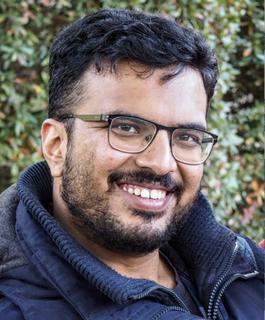New research group begins its work at the MPSD
A new independent Max Planck Research Group has taken up its work at the MPSD located at CFEL. The Computational Nanoscale Imaging group, led by Kartik Ayyer, will focus on developing new methods to visualize nanoscale objects such as biomolecules.
The group will develop new image reconstruction algorithms and apply them to experimental data with the scientific goal of determining the objects’ structures as well as understanding their dynamics.
Group leader Kartik Ayyer explains: “There are a variety of experimental methods we work with to get this information, which can be broadly grouped into diffractive imaging. This means that we shine bright light, usually X-rays, on a small object and directly measure the scattered light, without imaging them with a lens since lenses don't work very well with X-rays. This allows us, in principle, to observe how these objects move at an atomic scale.”
However, converting this noisy, sometimes indirect, data to structural movies requires significant algorithmic as well as computational work, since these data sets can run into the terabytes. “Our work will bridge the gap between what can be measured and what can be understood in these diffractive imaging experiments,” adds Kartik Ayyer.
The research focus of the Computational Nanoscale Imaging group fits in well with the MPSD’s mission: to achieve a greater understanding of the interplay between the dynamic structures of materials and their functional properties. Collaborations will be established with theoretical as well as experimental groups.
The team will operate at CFEL on the Bahrenfeld Research Campus.
Kartik Ayyer studied at Indian Institute of Technology in Delhi (India) and received his Master and PhD in Physics from Cornell University (U.S.) in 2014. Since then, he has worked as a postdoctoral research assistant in the DESY team of Henry Chapman. Two years ago, he was awarded the FEL Science and Applications Award of the International “Science@FELs 2016”conference
